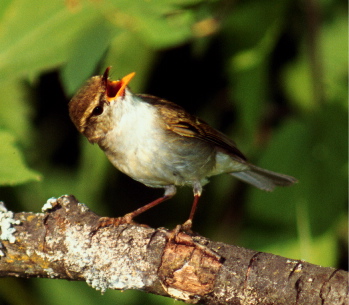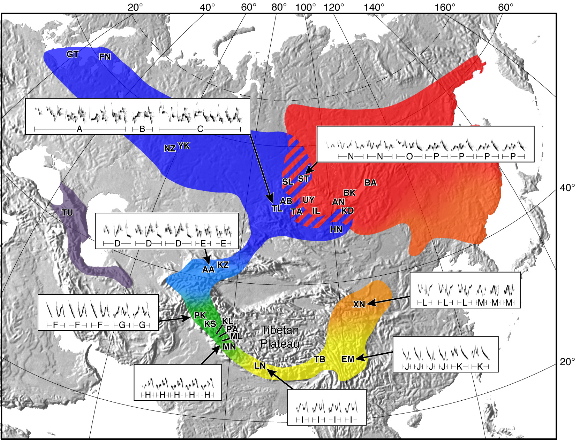![]() [Student post submitted by Darin Alexander]
[Student post submitted by Darin Alexander]
 This is a well written and studied article. This article was about the evolutionary divergence of the Siberian green warbler. The evidence they gather for their thesis is overwhelmingly convincing and they seemed to cover all questions that may come up. They believed and tested that the divergence of song may be the main cause of speciation. This is a highly feasible theory because if you can’t understand someone it is hard to breed with them. (Continues below...)
This is a well written and studied article. This article was about the evolutionary divergence of the Siberian green warbler. The evidence they gather for their thesis is overwhelmingly convincing and they seemed to cover all questions that may come up. They believed and tested that the divergence of song may be the main cause of speciation. This is a highly feasible theory because if you can’t understand someone it is hard to breed with them. (Continues below...)
Background Information: The warbler formed a ring species of interbreeding populations. These populations differed slightly in size, habitat, and calls/songs they use for communication and mating. When we reach the western and eastern Siberian warblers there song was so different that they don’t interbreed causing two separate species. “Molecular genetic data and consideration of preistolene climatological history indicate that the west Siberian and east Siberian forms of green warbler each result from northward expansions of southern forms along separate routes. (Irwin et al 2008)” The article takes a look at the evolution of calls and songs and what possible scenarios might have caused the variation.
The main hypothesis for song variation came from the size of the warbler, the environmental influence of sound, and genetic variation. As the species traveled northward the habitats would have been similar on their parallel routes. With this you would assume that the songs of the two groups migrating would be identical if habitat was the cause of evolution. This was not the case because the eastern and western form varied in song still. As they moved north the land was lusher so warblers grew larger in size. The two groups although similar in size also varied in song so that hypothesis also had to be thrown out.
Due to genetic testing it shows as the warblers migrated around small genetic changes caused a simultaneous change in their songs and calls. This was indeed the cause of the speciation of the two migrating warblers. When the two reached Siberia there vocal communication was so altered that they had completely different mating songs. You can’t really court a mate if she can’t understand you. So these small genetic changes that occurred while the warbler groups were separated cased the species to separate into two groups.
I believe there is sufficient evidence to conclude that song is the main cause for speciation in the warbler. The tests they conducted took all questions into account. The environment and landscape and there effects on sound was the main question on variation. The Warbler evolution is a fascinating event and it shows us firsthand how a related species can diverge into separate groups.
Reference:
IRWIN, D.E., THIMGAN, M.P., IRWIN, J.H. (2008). Call divergence is correlated with geographic and genetic distance in greenish warblers (Phylloscopus trochiloides): a strong role for stochasticity in signal evolution?. Journal of Evolutionary Biology, 21(2), 435-448. DOI: 10.1111/j.1420-9101.2007.01499.x
Abstract
Abstract
Divergence in signaling systems might play a central role in speciation. To assess the importance of possible causes of signal divergence, we examine two types of vocalizations within a geographically variable species complex, the greenish warblers (Phylloscopus trochiloides Sundevall). Calls, which are used by both sexes throughout the year, and songs, which are sung primarily by breeding males, differ distinctly between two distinct Siberian forms. Through
a ring of southern populations that connect the northern forms, signal divergence is correlated with both geographic distance and genetic divergence. Calls and songs differ in their particular patterns of geographic variation, probably because of the larger influence of sexual selection on songs than on calls. These patterns are supportive of neither acoustic adaptation nor morphology being major drivers of divergence in vocalizations. Rather, these results support the importance of stochastic evolution of communication systems in the evolution of new species.













0 comments:
Post a Comment